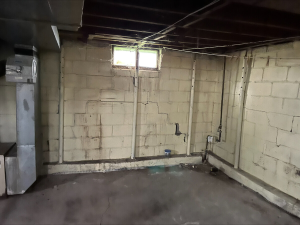When you’re looking for a fence company, be sure to ask the right questions. These will help you choose the best company for your project. Avoid companies with evasive answers and vague statements.

Successful Fence Businesses require a mix of skills, including customer service and financial knowledge. They also need to stay on top of jobs and quoting. Joist makes it easy to track customers and projects so you can keep your business growing.
A good fence company should offer a variety of services and products to meet the needs of different customers. They should also have a reputation for customer satisfaction and transparency. To find the right fence company, customers can check their reputation with reputable websites like the Better Business Bureau and Angi, which offers a streamlined search experience that allows homeowners to filter their searches by project and view local reviews.
If you are considering starting your own fence installation business, you must first determine what type of customers you want to serve. Decide whether you want to cater to residential or commercial customers, and make sure that there is sufficient demand in your area. In addition, you must create standard operating procedures and systems to ensure that your clients are satisfied. For instance, you should offer a client hub that allows customers to easily request work, approve quotes, double-check visit details, and pay invoices online.
When hiring a fence contractor, be sure to get everything in writing. Ask about the types of materials that will be used and a schedule for completion. In addition, be sure to get a written quote and a drawing specifying where the fence will be built. Also, ask if the fence installation will require a permit and check HOA guidelines and utility line location requirements.
Most homeowner improvement stores have a finance department that can help homeowners purchase fencing for their projects. These departments can set up a credit card with zero-percent interest over a specified time period, or they may be able to provide a loan through a third-party lender. They can also help you find the right financing option for your specific project.
Choosing the right structure for your business depends on how many employees you will have and whether you will sell or rent your equipment. If you plan to hire employees, you should register your business as a corporation or LLC. If you will be selling your fences, you should register as a sole proprietorship or partnership. You should also check the laws in your state and city to determine what business licenses you will need.
Financing options
When you need to install a new fence, the costs can be substantial. Fortunately, many fence companies offer financing options to help you stay within your budget. Some of these are direct financing offers from the company, while others partner with other lenders to provide you with a variety of loan options. Some of these include personal loans, home improvement loans, HELOCs, retail financing, and credit cards.
The exact legal terms of these financing options may vary slightly by state, but the basic process is the same. When you choose a provider, make sure that the process is thorough and clear to you. Also, consider whether the provider has a good reputation in the industry and is licensed to conduct business in your jurisdiction.
Some homeowners choose to use a home equity loan or a home equity line of credit (HELOC) to fund the cost of their fence installation projects. These types of loans are similar to home mortgages and require you to provide your property as collateral. The lender will set a limit for the amount you can borrow and will charge interest on the money you draw.
Other homeowners prefer to use a personal loan to finance their fence installation projects. These unsecured loans typically have fixed APRs and terms, which can help you plan your repayment schedule. Some providers, such as SoFi and Upgrade, specialize in lending to borrowers with fair credit. This helps them offer competitive rates and a straightforward borrowing experience for all borrowers.
A credit card is another popular option for paying for a fence project, but it comes with high interest rates. If you are able to pay the balance off in full during the first billing cycle, you can save money by not paying the introductory rate.
In addition to financing options, fence companies should also invest in business insurance. The most common policy is General Liability Insurance, but depending on your business, you may need Workers’ Compensation insurance or other policies. It is important to consult with a legal professional to determine which type of insurance is right for your business.
Warranty
When choosing a fence company for your home, it is important to make sure that they offer a warranty on their work. This will give you peace of mind and help protect your investment. Many homeowners forget about this aspect of their fence installation project, but it is an essential part of any fencing contractor’s business model. A quality warranty will help you feel confident in your fence, and can also save you money in the long run.
Before hiring a fencing contractor, ask about their warranty policies and what types of issues they will cover. A good fence company will be happy to answer your questions and provide you with the information you need. They will also explain how the process works and what to expect during the installation phase. They will also be willing to negotiate on pricing, if necessary.
Fence installation is an expensive undertaking, and it’s not uncommon for unforeseen problems to arise after the project is completed. Unexpected repairs and replacements can be costly, but a fence warranty can help reduce the burden by covering these expenses. Fence warranties typically cover the cost of repairs and replacements due to workmanship errors. However, the length of this coverage varies depending on the type of fence you choose and the manufacturer.
A quality fence is an excellent addition to any property, and it can increase the value of your home. In order to get the best value for your money, you need to look for a reputable fence company that offers high-quality materials and workmanship. A good fence company will also be knowledgeable about local regulations and homeowner’s association rules, so you can rest assured that your fence will meet all requirements.
To find a reputable fence company, start by doing a Google search. Enter “fence companies near me” and focus on the first few pages of results. Then study the reviews for each company. Make sure to read the negative and positive reviews, as well as how each company responded to them. If you have any concerns about a particular company, consult an attorney to learn your legal options. They may be able to send a demand letter, or even file a lawsuit on your behalf if needed.
Customer service
When homeowners are searching for a fence contractor, they want to find a company that will answer their questions and provide excellent customer service. Some of the top fencing companies provide both phone and email customer support, which allows homeowners to reach a representative at their convenience. This is important, as it gives the homeowner peace of mind knowing they can always contact a professional when they have questions or concerns about their project.
A reputable fence installation company will provide free estimates for their services. This will allow you to compare prices and quality among different companies. Be wary of companies that don’t offer free estimates, as this may indicate that they are not reliable.
During the estimate process, the fence company should go over all of your options and ask questions about your property, such as whether your community has restrictions on fencing. They should also be able to answer any questions you may have regarding local building codes and zoning laws.
Another factor to consider is the company’s reputation and the quality of their work. Look for customer reviews and testimonials on their website, and read any online forums or social media posts about the company. You can also check a company’s credentials by typing their name into an online search engine. Beware of fence contractors that change their name often, as this could be a sign of fraud.
Ideally, the fence company will also have a portfolio of previous projects they’ve completed. This will help you gauge the craftsmanship of their work and determine if they are qualified to complete your project. You should also ask about their experience with your specific type of fencing, as not all fences are made the same.
Lastly, the fence company should be willing to discuss their pricing structure. Some companies will have tiered pricing, while others may offer a flat rate for their services. This will help you make the right decision for your budget and project needs. It’s also a good idea to get a contract signed, which will specify the work that will be done and the price you’ll pay. The contract should also include a schedule and a completion date.


